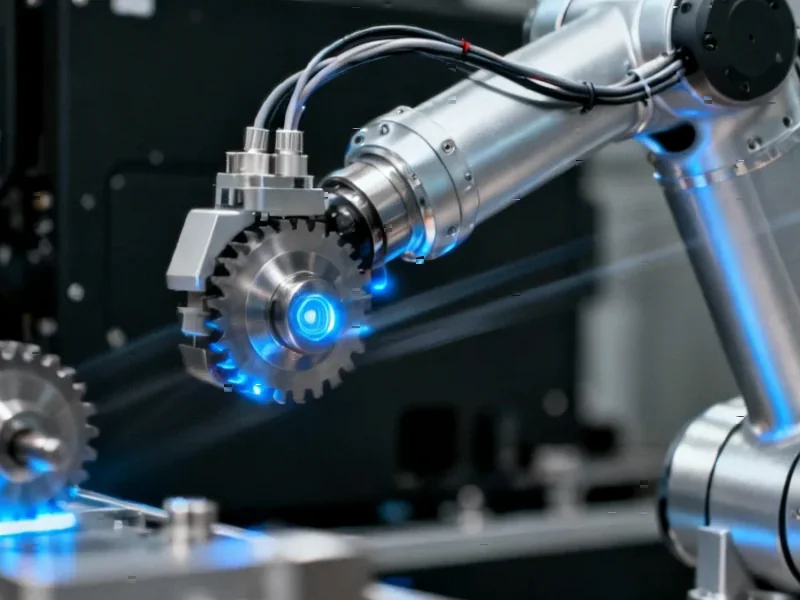Elon Musk’s Unprecedented Compensation Demand
During Tesla’s Q3 2025 earnings call, Elon Musk made headlines not for financial results but for his extraordinary justification of a proposed $1 trillion compensation package. The Tesla CEO argued that this astronomical sum—a significant increase from previous proposals—is essential not for personal wealth but as insurance to maintain influence over what he termed Tesla’s future “robot army.” This revelation came as Tesla’s board faces mounting pressure from unions and corporate watchdogs who’ve launched a “Take Back Tesla” campaign opposing the compensation plan., according to market trends
Table of Contents
The Strategic Rationale Behind the Demand
Musk’s explanation represents a fascinating shift in how executive compensation is framed. “My fundamental concern with regard to how much money and control I have at Tesla is if I go ahead and build this enormous robot army, can I just be ousted at some point in the future?” Musk stated during the call. He emphasized that the compensation isn’t about spending money but about ensuring he maintains “at least a strong influence” over Tesla’s robotic developments.
This positioning transforms the compensation discussion from traditional executive pay to what Musk characterizes as a necessary safeguard for responsible technological development. “I don’t feel comfortable wielding that robot army if I don’t have at least a strong influence,” he noted, introducing language more commonly associated with military technology than consumer robotics.
From Optimus Helper to “Robot Army”
The comments mark a significant departure from Tesla’s public positioning of its Optimus humanoid robot. Previously marketed as a helpful assistant for household tasks and industrial applications, Musk’s “robot army” terminology suggests broader ambitions. While technical specifications and deployment timelines for Optimus remain unclear, Musk’s language implies potential applications beyond domestic assistance., according to industry news
This rhetorical shift raises important questions about Tesla’s strategic direction and how the company envisions deploying robotics technology at scale. The contrast between the benign “helping hand” narrative and the more assertive “army” framing suggests multiple potential development paths for Tesla’s robotics division.
Investor and Regulatory Implications
The proposed compensation package faces significant hurdles beyond public perception. The “Take Back Tesla” campaign represents growing shareholder concern about corporate governance and compensation structure. Musk’s justification introduces novel considerations for regulators and investors evaluating appropriate executive compensation., according to market insights
Key questions emerging from this situation include:, as covered previously
- How should compensation committees evaluate requests tied to future technological influence rather than current performance?
- What governance mechanisms are appropriate for emerging technologies with potentially dual-use applications?
- How do traditional compensation evaluation frameworks apply to visionary technologies still in development?
The Broader Context of Tech Governance
Musk’s position touches on larger debates about founder influence in technology companies developing transformative technologies. His argument suggests that maintaining founder control or influence might be necessary for responsible development of powerful technologies. This perspective contrasts with conventional corporate governance models that emphasize board oversight and shareholder accountability.
The situation also highlights the evolving nature of corporate leadership in an era of rapid technological advancement, where traditional compensation and governance models may struggle to address the unique challenges posed by emerging technologies like advanced robotics.
As Tesla continues developing its robotics capabilities while navigating these complex governance questions, the outcome of Musk’s compensation request could establish important precedents for how technology companies manage leadership influence over potentially transformative technologies.
Related Articles You May Find Interesting
- PS5 Surpasses PS3 in US Lifetime Sales, Nears PS4 Milestone Amid Market Shifts
- The Evolution of Cyber Threats: How Vidar 2.0 Emerged as the New Infostealing Po
- AI’s Economic Paradox: Productivity Surges Amidst Employment Uncertainty
- How DataSnipper’s Traceable AI is Revolutionizing the Audit Industry
- Samsung Ramps 8th-Gen V-NAND Manufacturing as AI Inference Drives Storage Demand
References
- https://www.ziffdavis.com/terms-of-use
- https://www.ziffdavis.com/ztg-privacy-policy
- https://www.news.com.au/…/59ab485c1f5fd25eab38198781bc6a21
This article aggregates information from publicly available sources. All trademarks and copyrights belong to their respective owners.
Note: Featured image is for illustrative purposes only and does not represent any specific product, service, or entity mentioned in this article.



